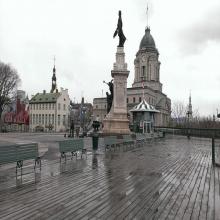 Two concepts of “slow” have been around quite a while now: slow food (in Italy and France) and slow fashion. Barrett Wissman, of Los Angeles, California, is now bringing us a third: slow entertainment. Wissman believes that with this, a “broader cultural understanding between people [will develop which will] contribute to the appreciation of what makes us human beings again.”
Two concepts of “slow” have been around quite a while now: slow food (in Italy and France) and slow fashion. Barrett Wissman, of Los Angeles, California, is now bringing us a third: slow entertainment. Wissman believes that with this, a “broader cultural understanding between people [will develop which will] contribute to the appreciation of what makes us human beings again.”
A columnist for Forbes, businessman and art appreciator, Wissman has over the years, made art into a business while providing greater access for all. Through his backing of IMG artists and creation of the Abu Dhabi Festival, Festival Del Sole, the Placido Dominigo Festival and Tribeca Firenze, Wissman has begun providing a truly rich, cultural experience for the increasing number of participants his festivals attract.
And it is a business as well. Wissman has had to very carefully find just the right artists from a whole array of different disciplines who will make the most of their talents during these festivals. But it’s not just as simple as that. He takes it a step further. Wissman gets these artists to step out of their comfort zone and show their talents in those disciplines in which they are not usually performing. One classic example of how he did this was when Robert Redford recited poetry accompanied by an orchestra; a clear example of thinking outside of the box.
When describing Wissman and his plans, Eluxe Magazine said, “Beethoven once said that “music is the mediator between spiritual and sensual life,” and Wissman seems to have embraced this notion fully. These events aren’t intended to lightly entertain; they’re not meant to be half-ignored whilst patrons film them on iPhones then Tweet and Instagram their demi-experiences around the world. No, with their magical mixtures of music, poetry, art, culinary experiences, wine tasting, vineyard explorations, lectures on music, yoga and Chinese medicine, these festivals are a full-on, sensual—and even spiritual—experience. ”
As is common when thinking outside of the box, likewise with what Wissman has found – something quite magical occurs. As Wissman himself explains: “these events create electricity; they exist in an instant that will never happen again.”



